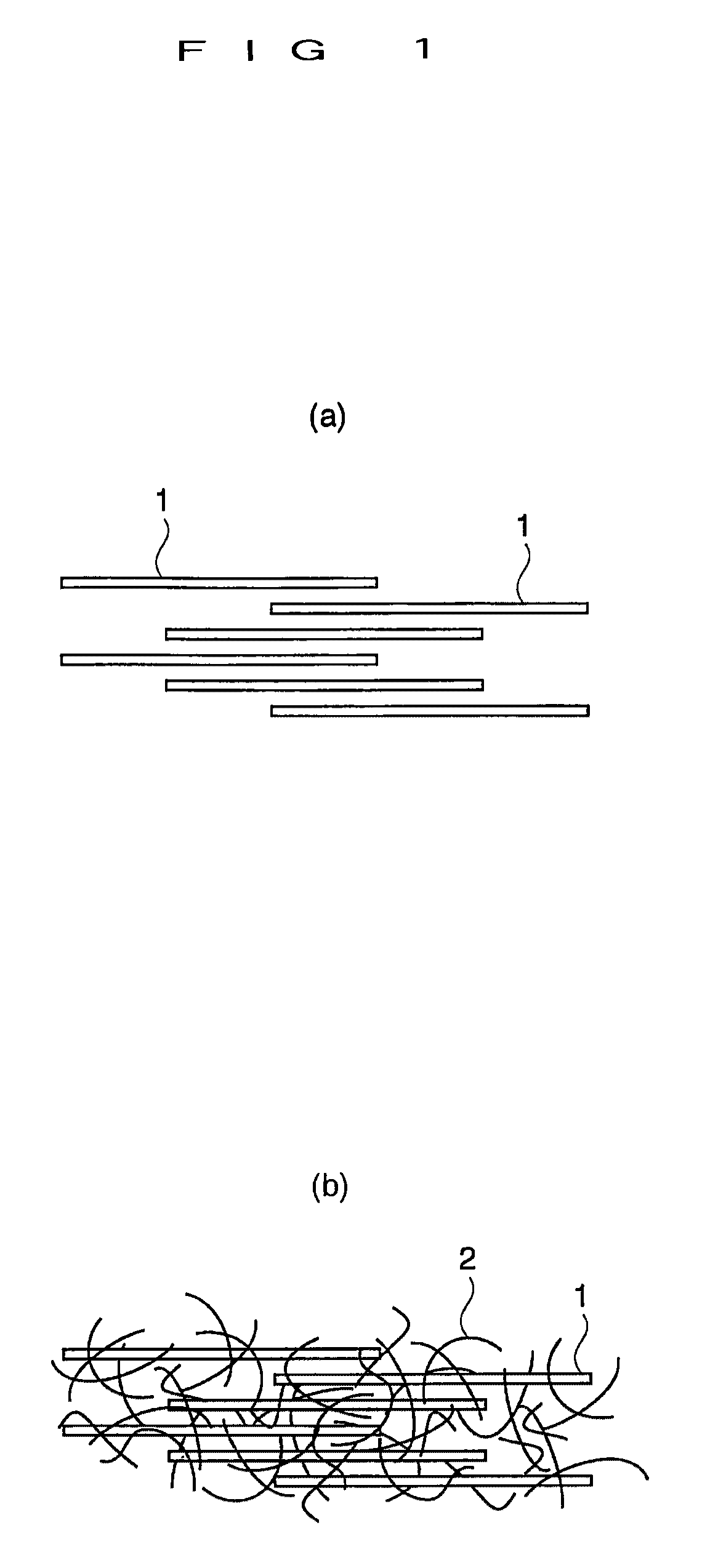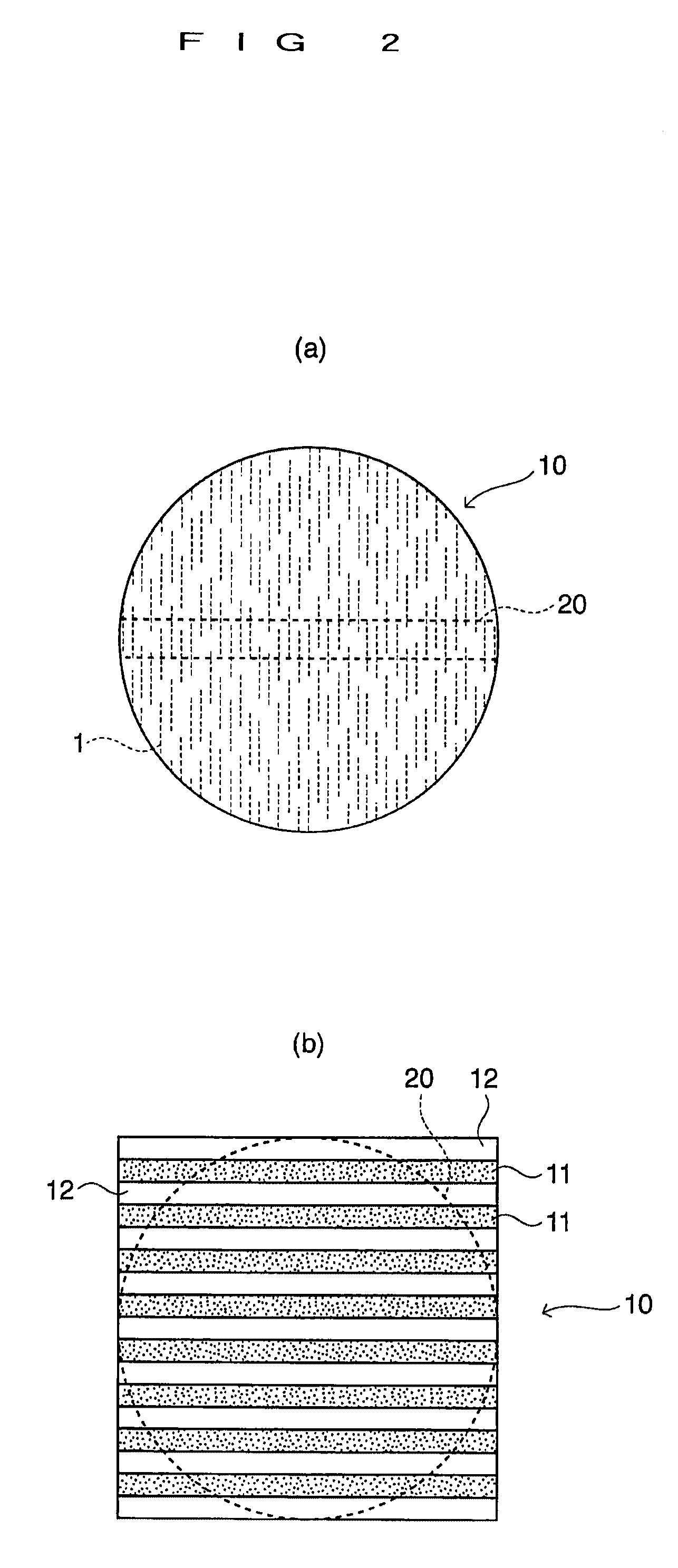High heat conduction composite material
a composite material and high heat conduction technology, applied in the direction of rigid containers, synthetic resin layered products, packaging, etc., can solve the problems of difficult to improve the heat conductivity to a great extent, invite aggravating economic properties, and short fibrous carbon materials, etc., to achieve excellent electric conduction, heat conductivity, and excellent durability. , the effect of excellent corrosion resistan
- Summary
- Abstract
- Description
- Claims
- Application Information
AI Technical Summary
Benefits of technology
Problems solved by technology
Method used
Image
Examples
examples
[0059]Next, the effect of the present invention will be made clear by specific examples. As a metal powder, an aluminum powder having an average particle size of 30 μm was prepared. As a fibrous carbon material, an orientation sheet of a vapor growth carbon fiber and a carbon nanotube having a thickness of 1 to 50 nm (30 nm on average) and a length of several hundred μm were prepared. The orientation sheet of the vapor growth carbon fiber is a densely gathered body of the vapor growth carbon fiber having a thickness of 1 to 50 μm (10 μm on average) and a length of about 2 to 3 mm, and is a fiber orientation sheet having a thickness in the order of 100 μm in which the direction of the fiber orientation is the same direction parallel to the surface. As described above, such an orientation sheet is produced naturally during the vapor growth process.
[0060]Carbon nanotubes are collected by cropping those that have vertically grown from numerous points on the substrate surface. This was d...
PUM
| Property | Measurement | Unit |
|---|---|---|
| diameter | aaaaa | aaaaa |
| diameter | aaaaa | aaaaa |
| particle size | aaaaa | aaaaa |
Abstract
Description
Claims
Application Information
 Login to View More
Login to View More - R&D
- Intellectual Property
- Life Sciences
- Materials
- Tech Scout
- Unparalleled Data Quality
- Higher Quality Content
- 60% Fewer Hallucinations
Browse by: Latest US Patents, China's latest patents, Technical Efficacy Thesaurus, Application Domain, Technology Topic, Popular Technical Reports.
© 2025 PatSnap. All rights reserved.Legal|Privacy policy|Modern Slavery Act Transparency Statement|Sitemap|About US| Contact US: help@patsnap.com



